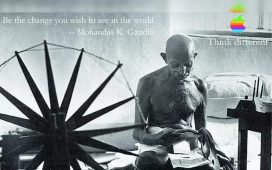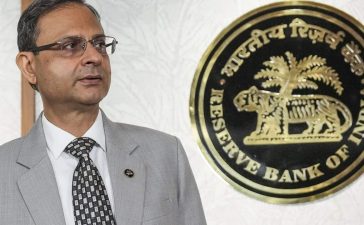
Directed by N Gopi Nainar and produced by Vetri Maaran, this new Tamil film’s release schedule is yet to be announced. The trailer, which shows the protagonist being interrogated by the police, references domestic abuse, authoritarianism, the definition of Indianness and – repeatedly – caste.
When I chanced upon it, as a critic based in north India where Hindi cinema is the staple diet, my thoughts immediately flew to what the reaction might have been if this was the curtain-raiser to a contemporary Hindi film – ‘Whoa!’ ‘Brave!’ ‘For a change, a film on caste.’ Because that’s how seldom Hindi filmmakers foreground caste, unlike their Tamil counterparts.
In the past decade-plus, Tamil directors such as Pa Ranjith, Vetri Maaran and Mari Selvaraj have been at the forefront of steering the discourse on caste on the big screen. Their significance lies in their refusal to confine anti-caste conversations to minimally marketed, niche works. They have strategically roped in top-rung stars to play dalit leads in knowledgeable, richly symbolic films that come armed with all the conventional trappings of commercial Indian cinema – song, dance, colour, action that defies believability, and romance.
As the country’s exhibition sector has gradually risen above its Hindi-centricity in the last 20 years, and streaming platforms have fuelled the rise of a discerning, language-agnostic pan-India viewership, this audience, too, has been exposed to the discussions on caste and tribal communities in Tamil cinema.
One of the biggest talking points among direct-to-OTT drops during the pandemic was TJ Gnanavel’s superstar-driven Jai Bhim (2021), in which Suriya played a lawyer supporting a tribal woman’s fight for justice in a custodial torture case. Another was Leena Manimekalai’s low-budget Maadathy: An Unfairy Tale, which began streaming in the same year.Maadathy’s chilling account of a dalit girl whose posthumous deification was preceded by a life of extreme poverty and sexual violence brings me to one of the glaring flaws in most mainstream Tamil anti-caste cinema: men-centricity. The sad truth is that contemporary Tamil directors who have sought to normalise dalit and adivasi leads have also, ironically, often been guilty of marginalising women within these marginalised groups. Ranjith and Mari Selvaraj, for instance, are phenomenal in many ways. Yet, their films have mimicked traditional patriarchal Indian cinema in the treatment of women. This includes the casting of artistes young enough to be Rajinikanth’s granddaughters as the spouse/lover of his characters in Ranjith’s Kabali and Kaala, and the lack of agency or centrality vested in women in Mari’s Pariyerum Perumal and Karnan.
This necessary dissection of even acclaimed filmmakers is possible because anti-caste Tamil cinema is produced in abundance, facilitated by the vibrant public dialogue on caste in Tamil Nadu, in addition to a degree of diversity among the industry’s writers and directors. In contrast, the upper-caste-ruled Hindi industry is uncomfortable with stories of oppressed castes.
Nothing illustrates the Hindi industry’s abysmal track record better than the evisceration of the Marathi film, Sairat, when it was remade as Dhadak, starring Janhvi Kapoor and Ishaan Khatter. Sairat, directed by Nagraj Manjule, was a blockbuster about a wealthy upper-caste woman and a dalit man in love. The Hindi screenplay virtually erased caste from the plot, reducing Dhadak to yet another rich-girl-poor-boy romance.
There’s no telling what Manushi – or, for that matter, Ranjith’s upcoming Thangalaan – will turn out to be. But the point is that politically aware cinephiles have the space to hold raging debates on the pluses and minuses of caste representation in Tamil cinema, because there is so much of it. Hindi film followers, on the other hand, are stuck with creators who, barring rare exceptions, have for long now pretended that the caste system simply does not exist.
The writer is author of The Adventures of an Intrepid Film Critic









